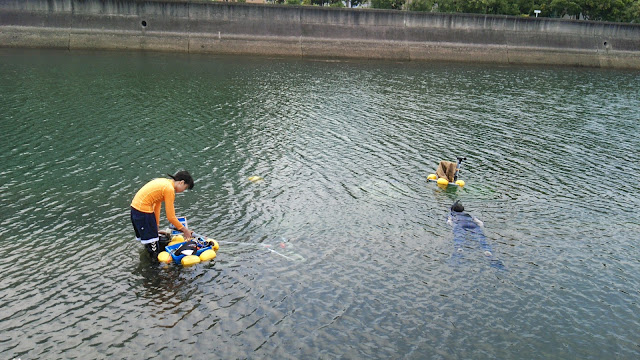This year, a student from Prof. Matsuoka's lab will join my lab as a PhD student. Prof. Matsuoka, who is a dinoflagellate specialist, not to mention a paleontologist, retired and asked if I was willing to pick Hinode up as a student. I was rather skeptical at first since I didn't want anything to do with microalgae, but Hinode was willing to work on benthic diatoms and microalgae within the seagrass beds so why not. It is "tradition" that the first time a new member of our lab goes on their first field trip, it will rain. And true to tradition it rained on his first time with us. I think this was in December of last year. You can see Hinode in the blue rain jacket, behind me pulling our old version of the surface buoy, which incidentally flipped over and destroyed the instruments the following day due to terrible weather. Lost 200,000 yen worth of equipment. I like rain, so this didn't bother me too much, since I'm wet anyways, but apparently the g
